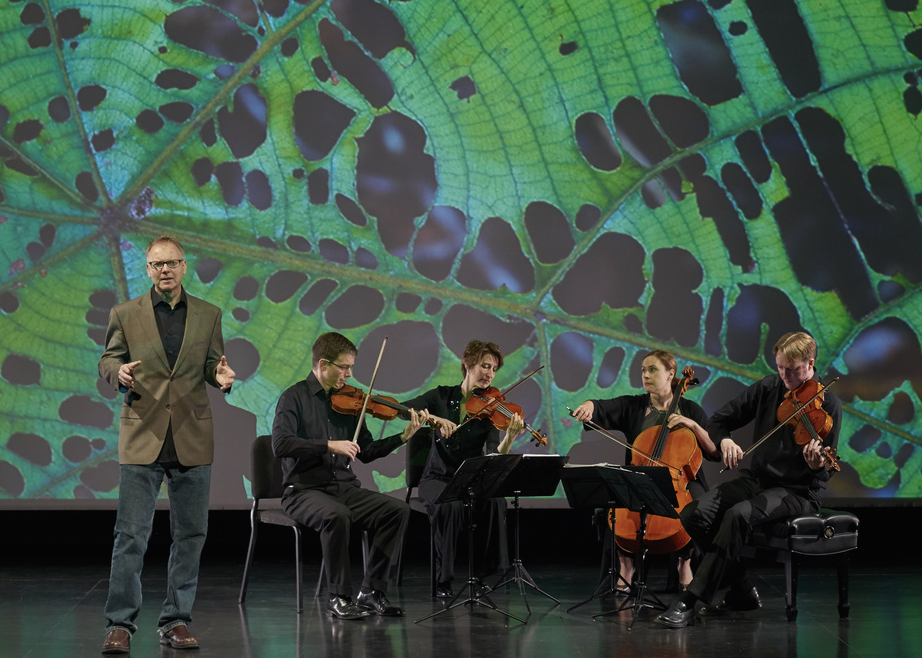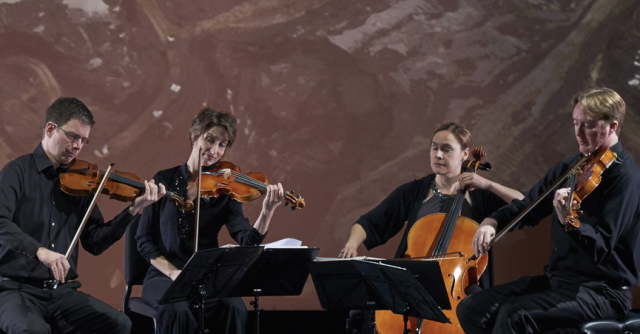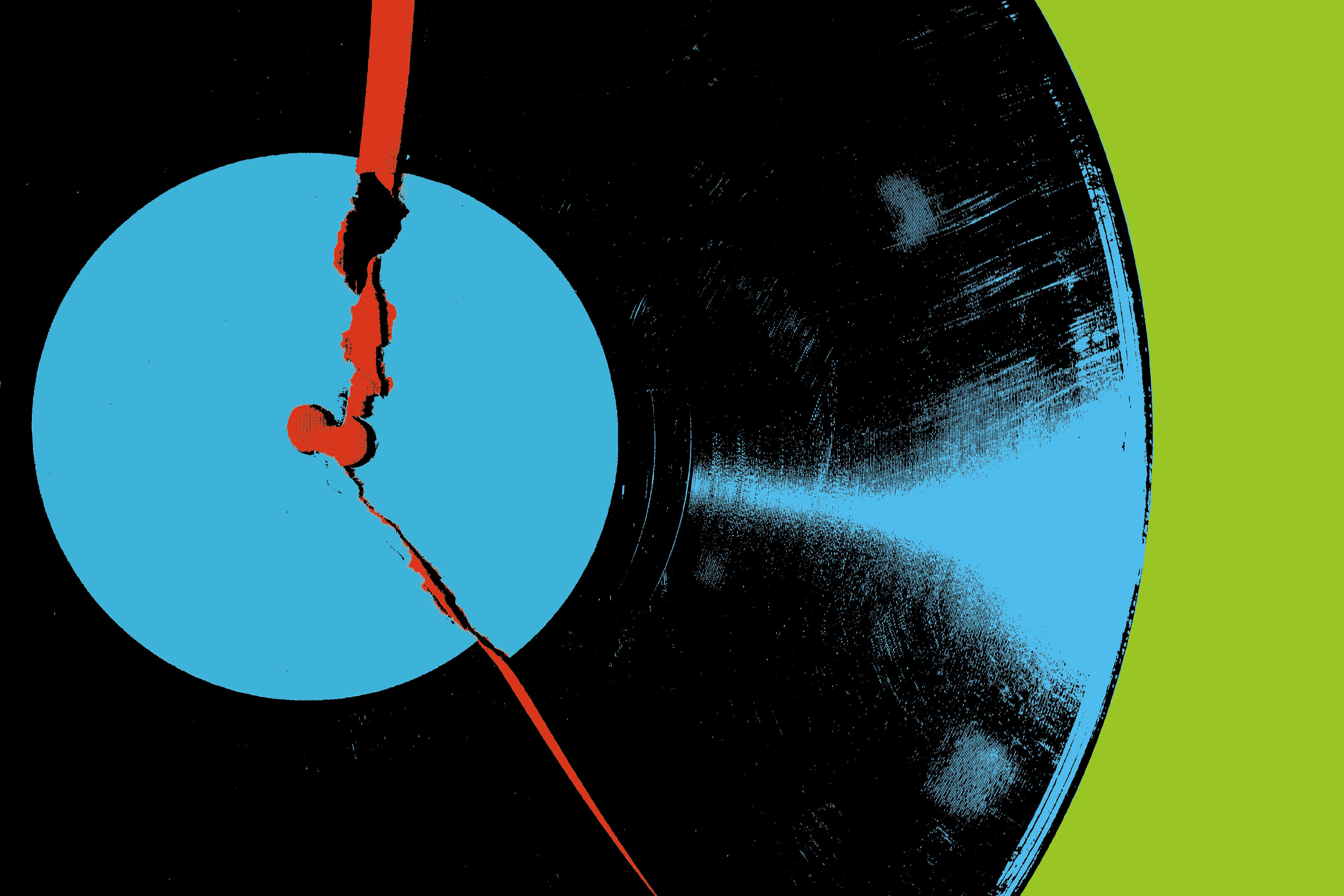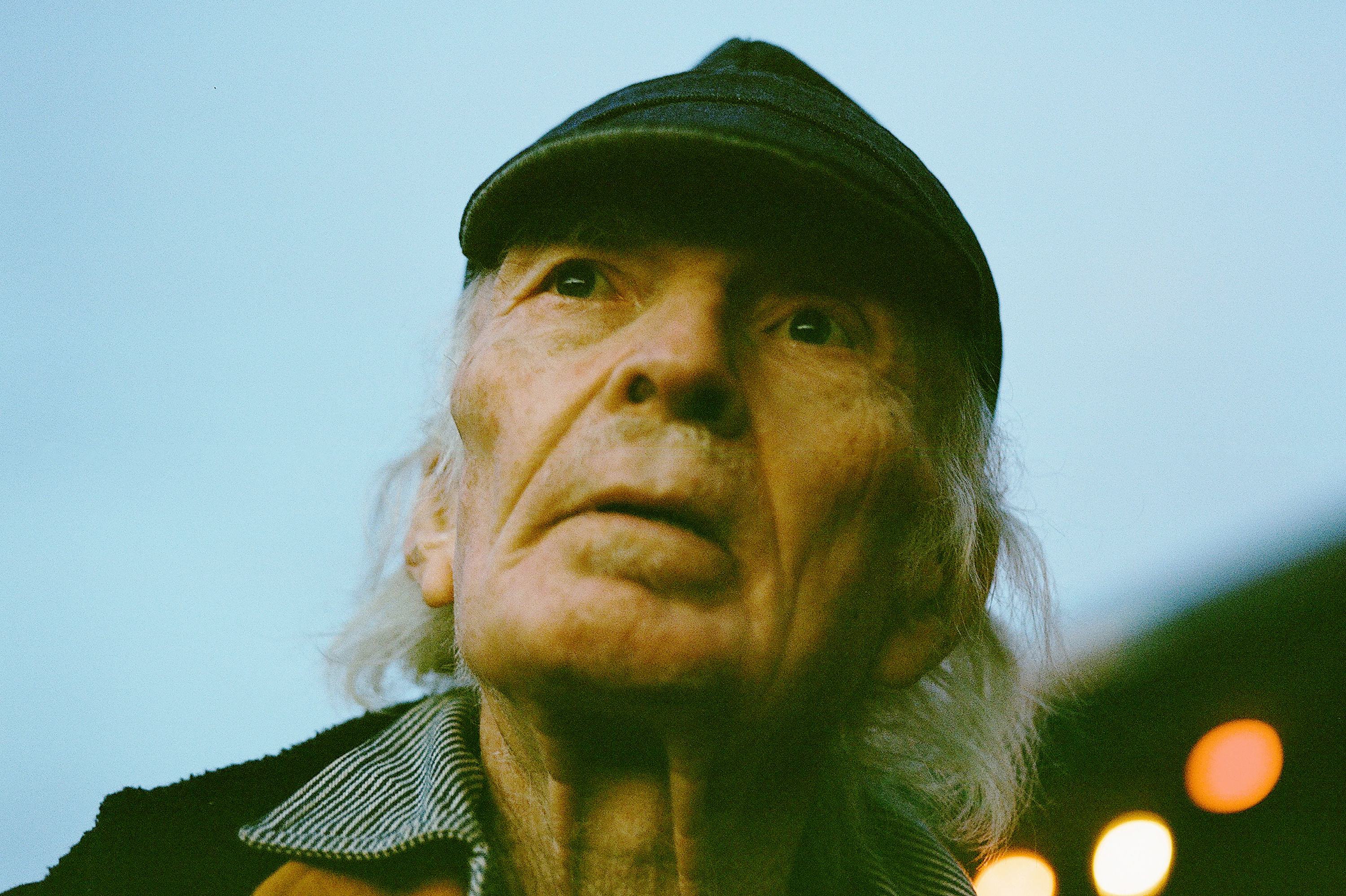Can Chamber Music Save the World?

Art meets science to save the world? You may call it a stretch, but one upcoming Portland show is aiming to prove you wrong.
From rising sea levels, to deforestation, to toxic pollution, most of us accept that climate change and other environmental problems are real, but much fewer people feel the urgency to do much about it. That gap between knowledge and action got Utah State University physicist Rob Davies thinking about how he could present science in a more impactful way. “People get it on an intellectual level,” says Davies, a longtime science educator, “but don’t really connect on a personal level… I’d stand up and tell people we’re living on the very edge here, but it doesn’t really feel like it to anybody.”
Enter the Crossroads Project, a collaboration between Davies, Utah State’s resident Fry Street Quartet, and numerous visual artists, which aims to spur audiences to action by combining information with the emotional power of art.
The Crossroads Project’s first chapter, Rising Tides, comes to the Newmark this Thursday, courtesy of Portland’5 Center for the Arts and Chamber Music Northwest. How does this right brain / left brain combination break down as a live performance? We did some digging...
The Science
The performance is broken into five vignettes, each of which consists of a "poetic science" lecture presented by Davies, and a piece of music played by the quartet. The first three vignettes focus on Earth’s natural systems, from water cycles to biospheres to food systems, and the last two position humanity in relation to these systems. The fourth section, entitled Societas, examines human civilization, and how our growth-based economy is fundamentally disruptive to our planet’s intricate natural balance. One example of this disruption examined in Societas is so-called sacrifice zones, or areas permanently damaged by, for example, the disposal of toxic waste. According to Davies, “What we’re really trying to communicate is the scale of our unsustainability, so you can put some upper bounds on how long things can go on as they are before the wheels start coming off the cart, and it’s not very long.”
The Music

The Fry Street Quartet. Photo courtesy Andrew McAllister
The Fry Street Quartet hired New York-based composer Laura Kaminsky, who often addresses socio-political issues in her music, to write a piece specifically for the project. The result is a piece in four movements—H20, Bios, Forage, and Societas, mirroring the first four sections of Davies’s talk—entitled Rising Tide. Although the group had no existing connection with Kaminsky, they knew she’d written music inspired by environmental topics. “Kind of on a lark, we sent her an email,” recalls violinist Robert Waters, “and within ten minutes, she wrote back and was very excited about the project.”
Davies describes the music in Crossroads, which also includes movements by Haydn and Janáček, as “a contemplative space,” explaining that it punctuates the five segments of the science presentation, giving space for audiences to react emotionally to the information.
The Imagery
The visual component, which is projected alongside the science talk, comes courtesy of a handful of visual artists and photojournalists. Abstract, nature-based paintings by Rebecca Allen call to mind the beauty of the natural world, and powerful photographs by the likes of Garth Lenz, who documents the Canadian tar sands, and Lu Guang, who captures the effects of industrial pollution in China, hammer home the destructiveness of human activity. Waters recalls the impact of a photo of a “sea of plastic bags” in one version of Crossroads, remembering that Davies explained, “‘This is 60,000 plastic bags. That’s the number of plastic bags we in America choose to consume every 5 seconds.’ To have that fact in front of you, face to face, is a whole different experience” from merely knowing the number.
While they admit the reach of a chamber music performance is limited, violinist Rebecca McFaul says a live performance has a more personal impact than a lecture or documentary. “The act of having a room full of people experiencing it together… it offers a sense of connection with your community.” And though Davies is adamant that personal actions aren’t enough, saying we don’t need to change lightbulbs, but whole power systems, McFaul hopes that internal change on an individual level can spur systemic action.
On the Utah State campus, where both Davies and the quartet are based, Crossroads has already had an impact. “Students have come up to us weeks after a performance—students we don’t know—and said, ‘I was so moved by the Crossroads Project, I decided to change my major to environmental studies.’”
Maybe there’s a chance to save the world after all . . .
The Crossroads Project: Rising Tide is at the Newmark Theatre on Thursday, October 15.




